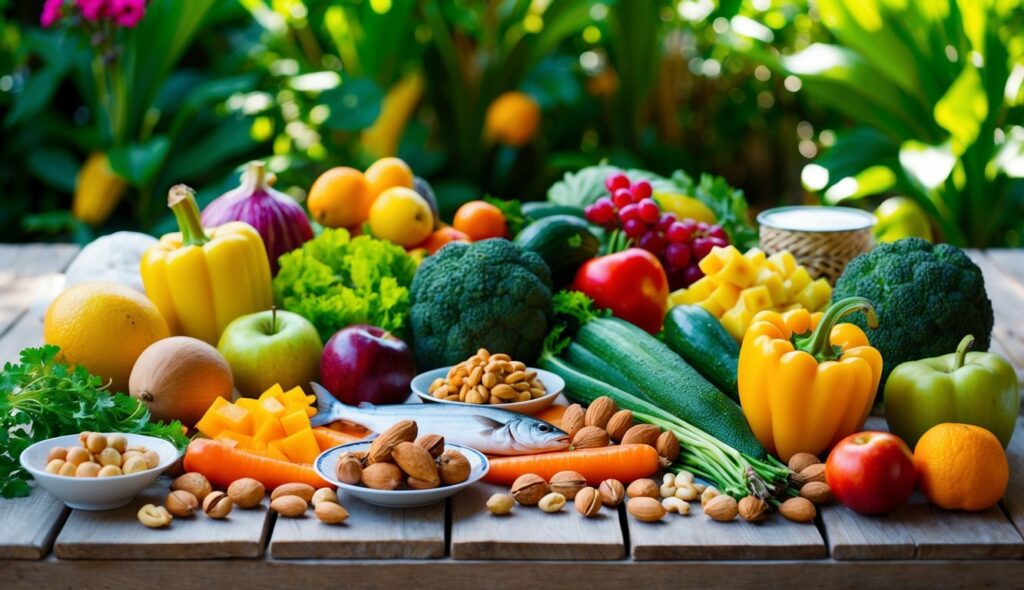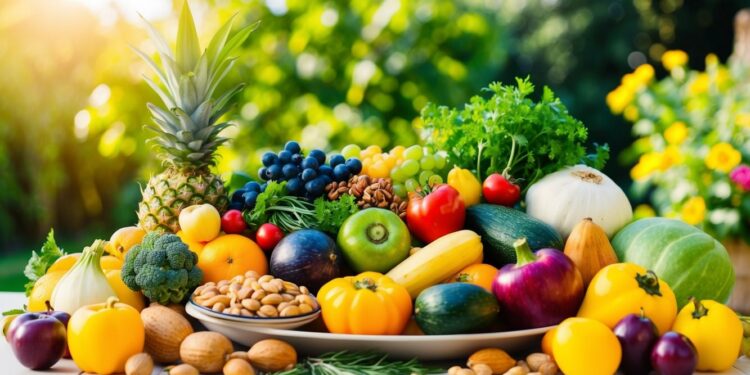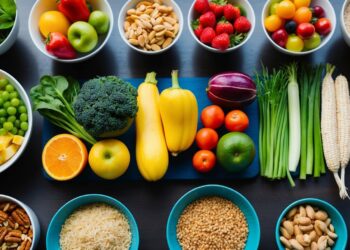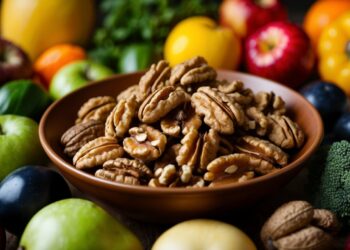As we age, our bodies face new challenges with inflammation that can affect overall health and vitality. Adding anti-inflammatory foods to your diet after 50 can help reduce chronic inflammation and potentially ease symptoms of age-related conditions. Eating foods like fatty fish (salmon, mackerel, and sardines), colorful berries, leafy greens, olive oil, and nuts can naturally combat inflammation in your body.
The good news is that making these dietary changes doesn’t have to be complicated or restrictive. Simple swaps like choosing whole foods over processed ones can make a big difference in how you feel day to day. Many people report improved energy levels, better joint mobility, and enhanced well-being when they focus on anti-inflammatory eating patterns.
Your quality of life in your 50s and beyond can be greatly improved by what you put on your plate. Think of anti-inflammatory foods as your allies in aging well – they work behind the scenes to support your body’s natural healing processes while also providing essential nutrients your body needs now more than ever. The anti-inflammatory diet isn’t just about avoiding certain foods; it’s about embracing delicious, nutrient-rich options that nourish your body and mind.
Understanding Inflammation and Aging Over 50
As we age, our bodies often experience increased inflammation, which can affect overall health and quality of life. Inflammation is a natural process, but when it becomes chronic, it can contribute to many health challenges that become more common after 50.
The Role of Diet in Managing Inflammation

What you eat has a powerful effect on inflammation levels in your body. An anti-inflammatory diet can help manage chronic inflammation naturally, without medication side effects.
Foods rich in antioxidants like colorful berries, dark leafy greens, and bright vegetables help fight inflammation at the cellular level. These foods contain compounds that neutralize harmful free radicals in your body.
Healthy fats are also important inflammation fighters. Olive oil, fatty fish like salmon, and nuts contain omega-3 fatty acids that help reduce inflammatory markers in your blood.
Anti-inflammatory spices to include daily:
- Turmeric (contains curcumin)
- Ginger
- Rosemary
- Paprika
- Cumin
Chronic Inflammation and Age-Related Diseases
Chronic inflammation is linked to many health problems that become more common after 50. Your risk of developing conditions like arthritis, heart disease, and type 2 diabetes increases when inflammation persists in your body.
Research shows inflammation plays a role in cognitive decline too. Conditions like dementia may be connected to long-term inflammatory processes in the brain.
Even mood disorders such as depression can be affected by inflammation. Your emotional health often improves when you reduce inflammation through diet and lifestyle changes.
The good news is that making anti-inflammatory choices daily can help protect your body from these age-related conditions. Small changes in your eating habits can lead to significant improvements in how you feel.
Core Anti-Inflammatory Foods to Include in Your Diet
Adding anti-inflammatory foods to your meals can help reduce chronic inflammation and improve your health after 50. The right combination of fruits, vegetables, healthy fats, whole grains, and quality proteins creates a powerful defense against inflammation.
Fruits and Vegetables
Colorful fruits and vegetables are packed with antioxidants that fight inflammation. Dark leafy greens like spinach and kale should be at the top of your shopping list. These greens contain vitamins and minerals that help reduce inflammatory markers in your body.
Berries are inflammation-fighting superstars! Blueberries, strawberries, and blackberries contain anthocyanins that can reduce inflammation and boost your immune system.
Broccoli is another excellent choice. It’s rich in sulforaphane, a compound with powerful anti-inflammatory effects. Try to eat it lightly steamed to preserve its nutrients.
Tomatoes contain lycopene, which helps reduce inflammation throughout your body. Cooking tomatoes actually increases their lycopene content, so enjoy them in sauces and soups.
Aim for at least 5 servings of fruits and vegetables daily, with an emphasis on variety to get different anti-inflammatory compounds.
Healthy Fats and Oils
Not all fats are created equal! Olive oil stands out as a cornerstone of anti-inflammatory eating. It contains oleocanthal, which works similarly to ibuprofen in reducing inflammation.
Try to use extra virgin olive oil for salad dressings and low-heat cooking. For cooking at higher temperatures, avocado oil is a good alternative.
Omega-3 fatty acids are essential for fighting inflammation. You can find them in:
- Fatty fish (salmon, mackerel, sardines)
- Walnuts
- Flaxseeds
- Chia seeds
Aim to eat fatty fish at least twice a week to get adequate omega-3s. If you don’t eat fish, consider adding a tablespoon of ground flaxseed to your daily diet.
Nuts like almonds and walnuts make great snacks and add healthy fats to your meals. A small handful (about 1/4 cup) daily provides benefits without too many calories.
Whole Grains and High-Fiber Options
Refined grains can trigger inflammation, but whole grains do the opposite. They contain fiber that feeds beneficial gut bacteria, helping to reduce inflammation.
Good choices include:
- Oats
- Brown rice
- Quinoa
- Barley
- Buckwheat
Start your day with oatmeal topped with berries for a double dose of anti-inflammatory foods.
Legumes like beans, lentils, and chickpeas are fiber powerhouses that help reduce inflammation. They’re also packed with protein and nutrients.
Try adding a cup of beans to your diet several times a week. Black beans, kidney beans, and lentils are all excellent choices with different nutrients.
Fiber helps reduce inflammation by supporting a healthy gut microbiome. Aim for at least 25-30 grams of fiber daily from whole food sources.
Quality Proteins
Protein choices matter when fighting inflammation. Fatty fish like salmon, mackerel, and sardines top the list because they provide both quality protein and omega-3s.
If you eat meat, choose lean options like skinless poultry and limit red meat to occasional servings. When you do eat red meat, grass-fed varieties contain more anti-inflammatory nutrients.
Plant proteins like beans, lentils, and chickpeas offer protein with fiber and antioxidants. Try replacing meat with these options a few times weekly.
Greek yogurt contains probiotics that support gut health and reduce inflammation. Choose plain varieties and add your own fruit to avoid added sugars.
Eggs provide quality protein and nutrients. Don’t fear the yolks—they contain lutein and zeaxanthin, which have anti-inflammatory properties that benefit eye health.
Anti-Inflammatory Superfoods and Spices
Adding certain foods and spices to your diet can help fight inflammation naturally. These powerful ingredients work together to reduce swelling and pain in your body.
Benefits of Spices in an Anti-Inflammatory Diet
Turmeric is one of the best spices for fighting inflammation. It contains curcumin, which works almost like medicine in your body. Try adding a sprinkle to soups or making golden milk with turmeric and warm plant milk.
Ginger offers similar benefits and can ease joint pain. Fresh or dried ginger adds flavor to many dishes and makes a soothing tea.
Garlic isn’t just for flavor – it contains compounds that block inflammatory pathways. Add it to meals near the end of cooking to preserve its health benefits.
Green tea deserves a spot in your daily routine. It contains antioxidants called catechins that reduce inflammation. Try replacing one coffee with green tea each day.
Even dark chocolate (70% cocoa or higher) has anti-inflammatory properties! A small square makes a healthy treat.
Seed and Nut Powerhouses
Flax seeds and chia seeds pack a powerful anti-inflammatory punch. They contain omega-3 fats that help lower inflammation throughout your body. Sprinkle ground flax or chia on yogurt, oatmeal, or blend them into smoothies.
Walnuts stand out among nuts for their high omega-3 content. A small handful makes a perfect snack that satisfies hunger while fighting inflammation.
Almonds provide healthy fats plus vitamin E, which protects cells from damage. Try unsalted varieties to avoid extra sodium.
Adding these seeds and nuts to your daily meals is simple. Make a trail mix with dark chocolate bits and walnuts, or top salads with toasted almonds for a satisfying crunch.
Lifestyle Considerations for an Anti-Inflammatory Diet
Adopting an anti-inflammatory diet involves more than just knowing which foods to eat. It requires making thoughtful lifestyle changes that support your overall health goals and make healthy eating sustainable long-term.
Avoiding Inflammatory Foods
Your diet likely contains foods that can trigger inflammation without you realizing it. Processed foods with long ingredient lists are often culprits, as they contain additives and preservatives that can upset your body’s balance.
Red meat, especially when consumed daily, can increase inflammation markers in your bloodstream. Try limiting it to once or twice a week, choosing grass-fed options when possible.
Watch out for these common inflammatory triggers:
- Trans fats in fried foods and some baked goods
- Added sugars in sodas, desserts, and many packaged foods
- Refined carbs like white bread and pasta that spike blood sugar
- Saturated fats found in full-fat dairy and fatty cuts of meat
Even seemingly healthy foods can be problematic if you have sensitivities. Pay attention to how your body feels after eating certain foods.
Integrating Anti-Inflammatory Foods into Daily Life
Start small rather than overhauling your entire diet overnight. Try adding one anti-inflammatory food to each meal, like berries with breakfast or turmeric in your afternoon tea.
Meal prep can be your best friend! Spend an hour on weekends chopping vegetables or making a big batch of anti-inflammatory soup to enjoy throughout the week.
Keep it simple with easy switches:
- Swap coffee for green tea occasionally
- Replace crackers with nuts for snacking
- Use olive oil instead of butter when cooking
- Add a handful of leafy greens to sandwiches and smoothies
Consider the 80/20 approach—focus on eating well 80% of the time, allowing flexibility for special occasions. This balance helps make healthy eating sustainable rather than restrictive.
Role of Hydration and Exercise
Water is essential for proper digestion and helps flush inflammatory toxins from your system. Aim for at least 8 glasses daily, more if you’re active or it’s hot outside.
Herbal teas like ginger and turmeric can count toward your fluid intake while providing additional anti-inflammatory benefits. Try having a cup in the afternoon instead of reaching for caffeine.
Regular movement complements your dietary efforts by:
- Improving circulation
- Reducing stress hormones that contribute to inflammation
- Supporting healthy digestion
- Enhancing sleep quality
Even gentle exercise like walking for 20 minutes daily or stretching can make a difference. The key is consistency rather than intensity, especially when you’re just starting out.
Remember that adequate sleep (7-8 hours nightly) also plays a crucial role in fighting inflammation and supporting your longevity goals.









